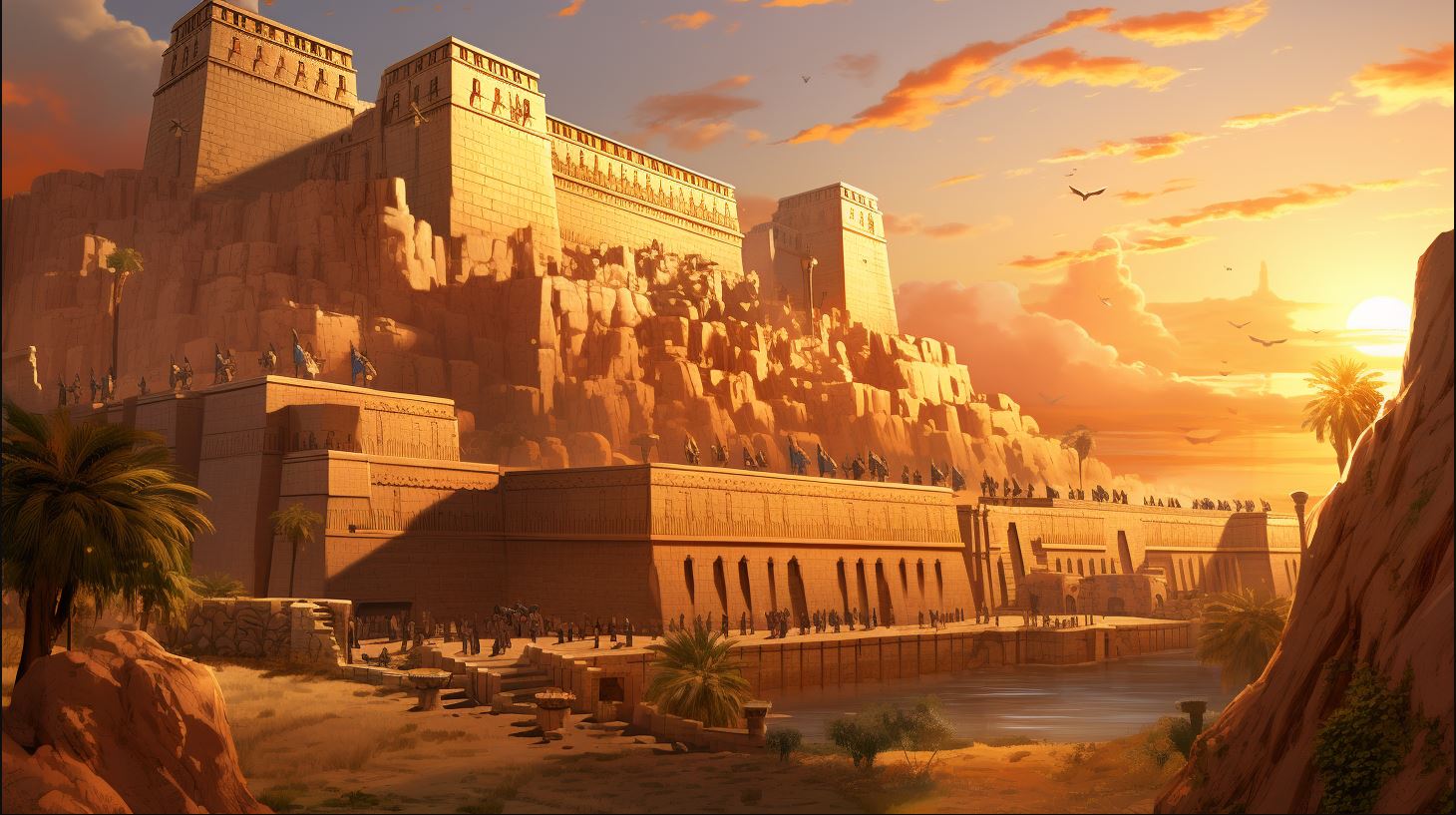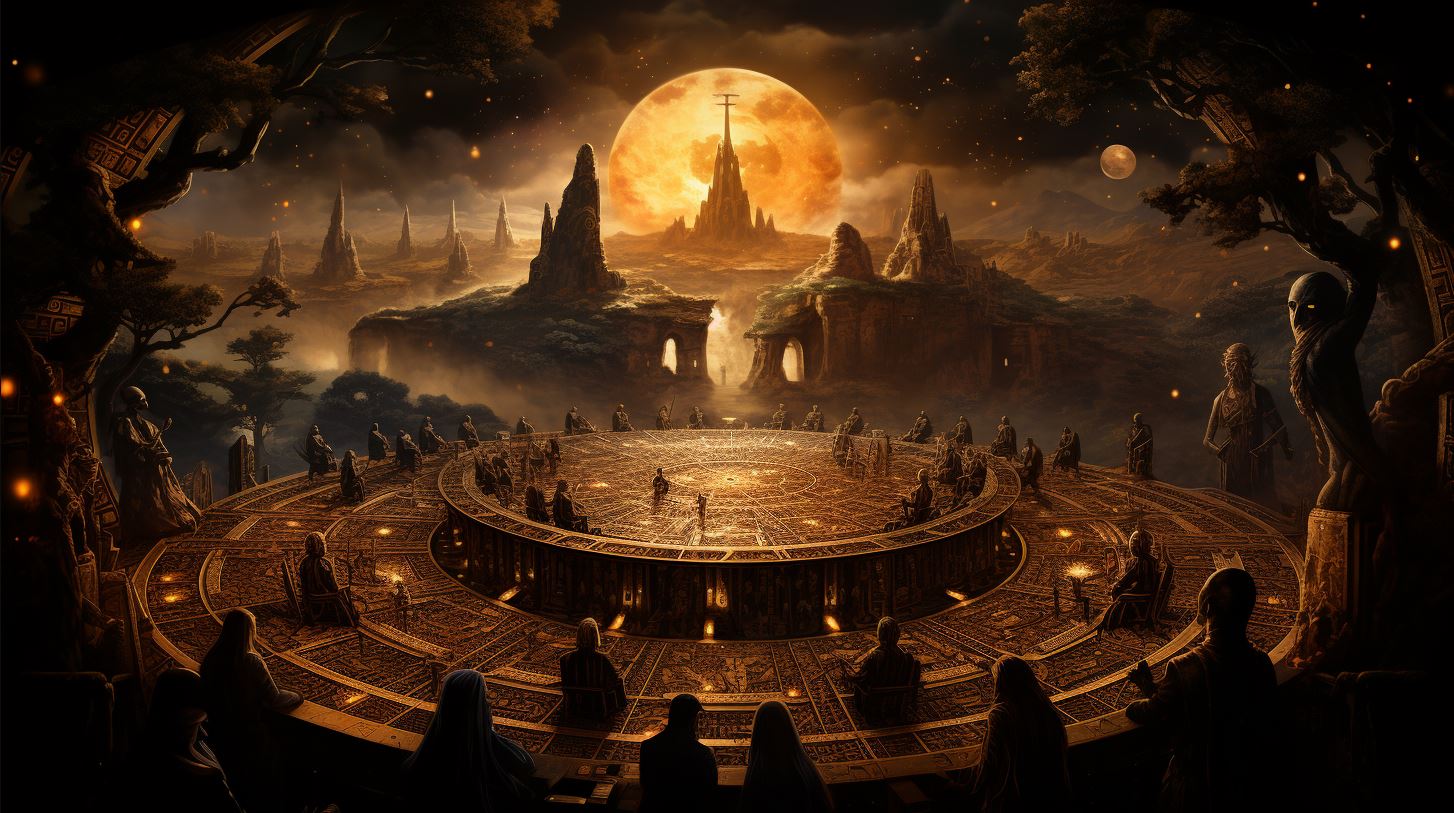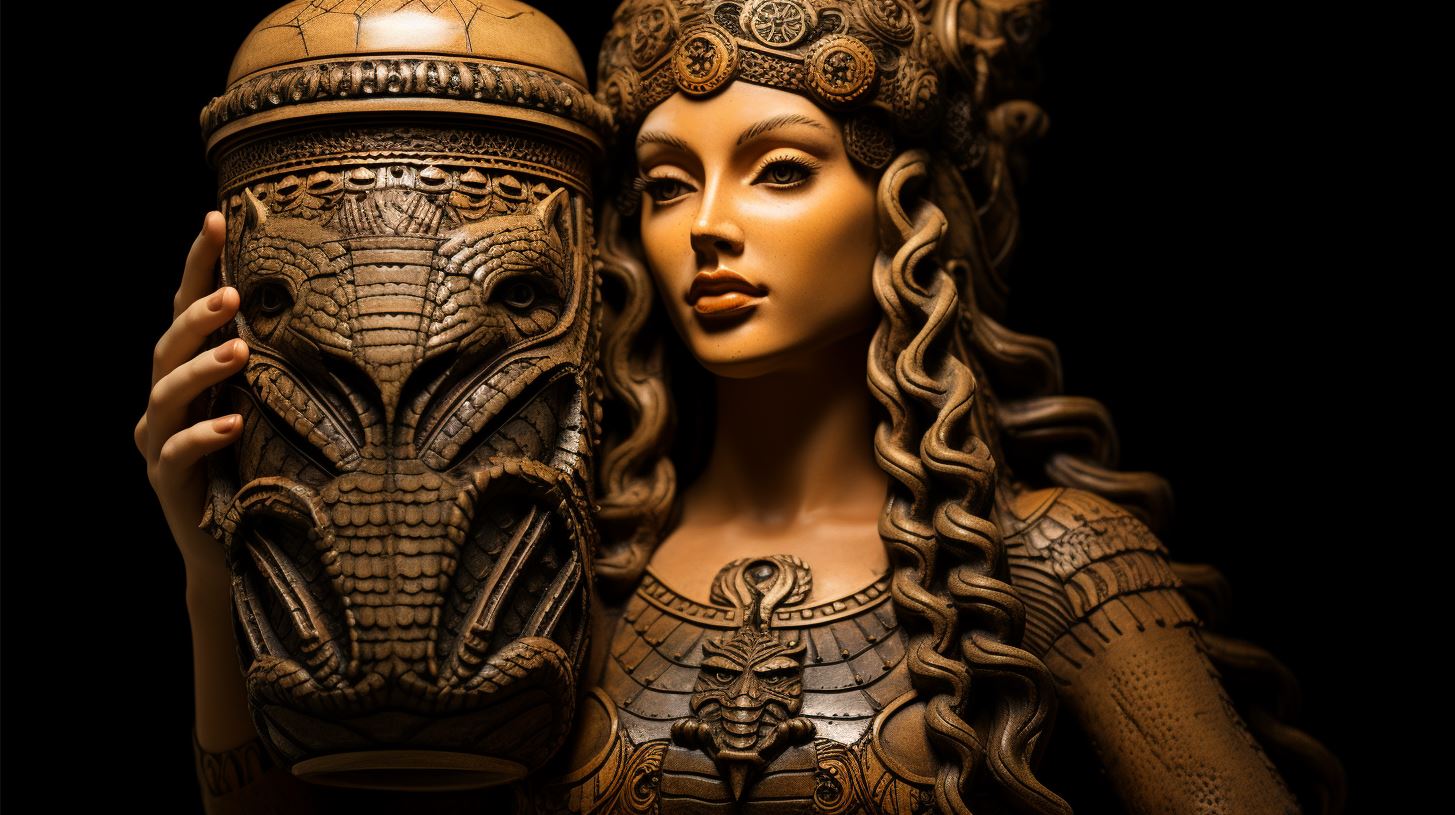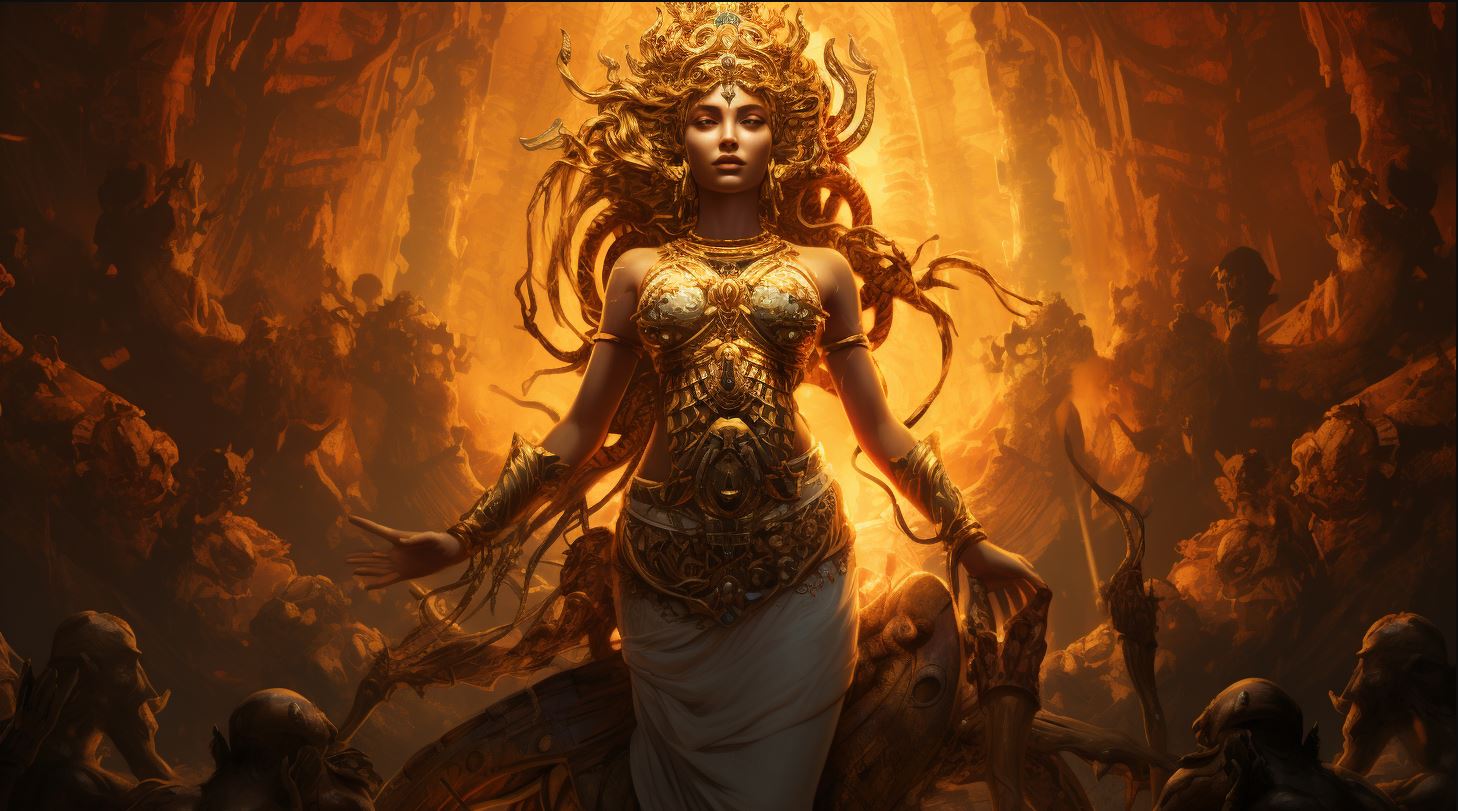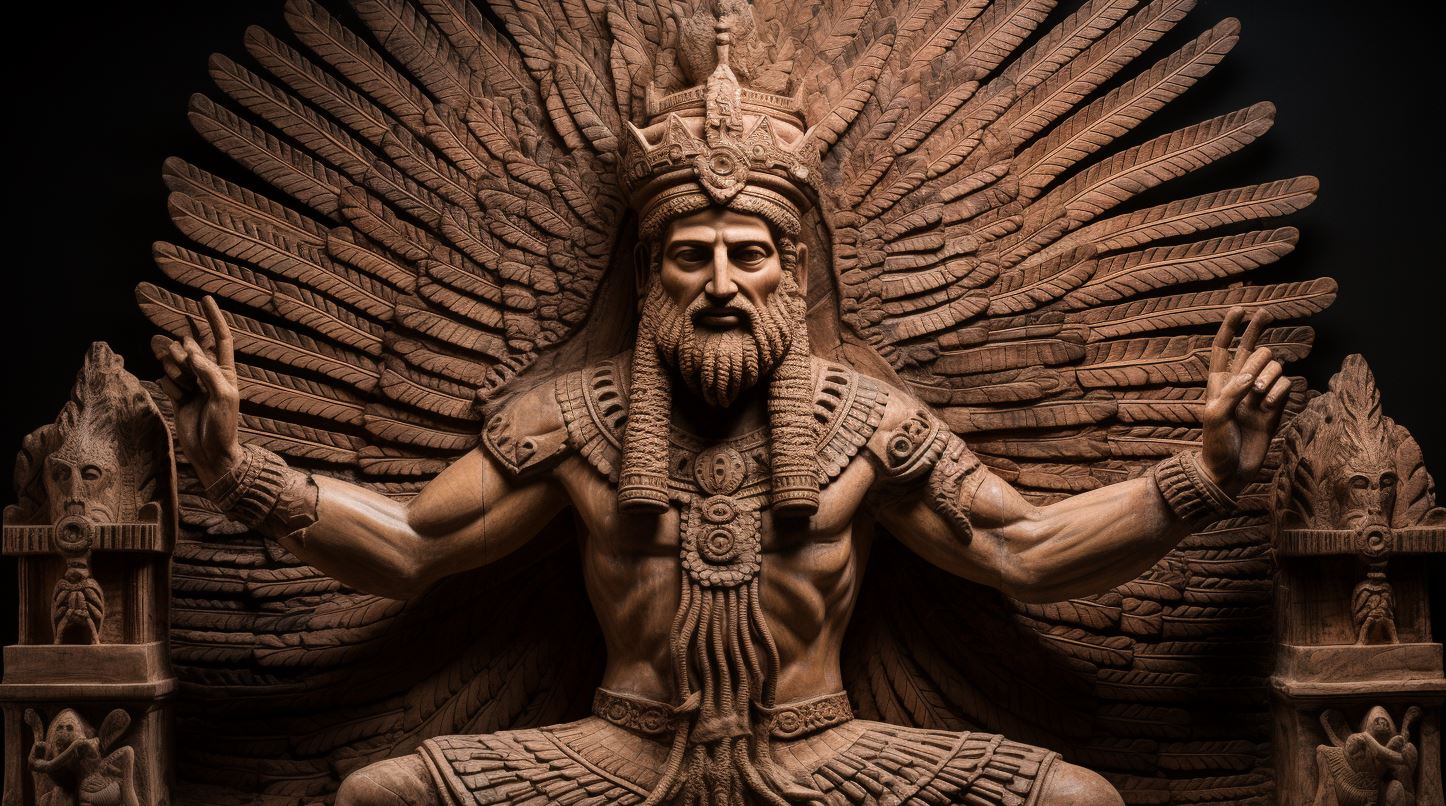Ninmah Goddess: The Origins of Ninmah Goddess in Ancient Mesopotamia

Ninmah Goddess, also known as Ninhursag, was a revered ancient mother goddess in Mesopotamia. She held significant importance in creation and birth, as well as healing and herbal knowledge.
Represented through various symbols and images, Ninmah’s divine lineage is depicted with intertwined ropes symbolizing DNA and umbilical cord motifs representing her role in childbirth. Her influence transcended cultures and epochs, with traces found in ancient Egypt, Greece, Rome, and even Colombia.
This article explores the origins, names, mythological significance, and global presence of the Ninmah goddess.
The Origins of Ninmah Goddess in Ancient Mesopotamia
The Sumerian Pantheon and the Role of Ninmah
In the ancient Mesopotamian civilization, the Sumerian pantheon played a significant role in religious beliefs and practices. Within this pantheon, Ninmah Goddess held a prominent position as a revered deity.
She was regarded as a powerful mother figure, associated with creation, fertility, and protection.
As one of the great gods and goddesses in Sumerian mythology, Ninmah played a vital role in the divine hierarchy.
She was considered the divine mother of all creation and was often depicted as a nurturing and caring figure. Ninmah’s influence extended to various aspects of life, including the birth of humans and their overall growth and development.
The Mythology and Symbolism Associated with Ninmah
The mythology surrounding Ninmah Goddess is rich with symbolism and tales of her divine powers. She is commonly associated with the creation of humankind and regarded as the mother of all humanity.
According to ancient texts, Ninmah played a crucial role alongside other deities in the shaping and formation of human beings.
Divine Birth and Creation
- Ninmah was often depicted with symbols representing birth and creation, such as the umbilical cord.
- Her divine power extended to the act of giving birth and nurturing new life, emphasizing her role as the ultimate mother figure.
- The symbolism of the umbilical cord also represents the intimate connection between Ninmah Goddess and the creation of mankind.
Nurturing and Life-Giving Forces
In Mesopotamian myths, Ninmah was portrayed as a compassionate and nurturing deity, responsible for sustaining life and ensuring the well-being of all living creatures.
She was believed to possess profound knowledge of healing and the use of herbal remedies.
Guardian of the Divine Order
Ninmah Goddess, also referred to as Ninhursag, embodies different names and aspects that contribute to her rich mythological presence. These names reflect her multifaceted nature within the ancient Mesopotamian pantheon.
Ninhursag: Another Name for Ninmah
Ninhursag is an alternate name used to reference the goddess Ninmah. This name signifies her role as the “Lady of the Foothills,” associating her with the nurturing and fertile earth.
As Ninhursag, she represents the life-giving force and sustainer of all living beings.
The Relationship Between Ninmah and Other Deities
Ninmah’s significance extends beyond her individual persona, as she shares connections with various deities in Mesopotamian mythology. One of her notable associations is with Enki, the god of wisdom and water.
Together, they form a divine partnership, reflecting their complementary roles in the cosmic order. Another connection exists with Ninkurra, a goddess regarded as her daughter and sometimes identified as an aspect of Ninmah herself.
Additionally, Uttu, the goddess of plants and vegetation, is often linked to Ninmah due to their shared domain of herbal knowledge and healing.
Ninmah’s relationships with other deities highlight her interconnectedness within the divine hierarchy and reinforce her significance in the pantheon.
Ninmah’s Importance in Creation and Birth
Ninmah, the ancient Mesopotamian goddess, played a significant role in the creation and birth processes. Her divine influence extended to various aspects, such as the creation of the working class and her remarkable healing and herbal knowledge.
Ninmah’s Role in the Creation of the Working Class
Among Ninmah’s many responsibilities, one notable aspect was her contribution to the creation of the working class. According to Mesopotamian mythology, Ninmah, along with the god Enki, was involved in crafting the human race.
She molded individuals from clay, shaping their bodies and infusing them with life.
Through her skillful craftsmanship, Ninmah created individuals with different abilities and purposes. Some were created as skilled craftsmen, others as agricultural workers, and yet others as intellectuals.
This diverse labor force was crucial for the functioning and progress of society.
The Goddess of Healing and Herbal Knowledge
Ninmah was highly regarded for her exceptional healing abilities and deep knowledge of herbs. She held great power in the realm of healing, both physical and spiritual. As the goddess of healing, she possessed the wisdom and skill to cure ailments, ease pain, and restore balance to the body and mind.
Her intricate understanding of herbs and their medicinal properties allowed her to create remedies and potions that could heal various illnesses and injuries. She was often depicted with symbols representing her healing powers, such as a bowl containing medicinal herbs or a staff entwined with healing vines.
Furthermore, Ninmah was known for her proficiency in dream interpretation. People sought her guidance in understanding the messages conveyed through their dreams, believing that she possessed the ability to unveil hidden meanings and provide valuable insights into their lives and destinies.
- Ninmah’s role in the creation of the working class showcased her divine craftsmanship and importance in nurturing society.
- Her healing abilities and extensive knowledge of herbs had a profound impact on the well-being of individuals.
- Seeking guidance from Ninmah regarding dream interpretation was a common practice, highlighting her role as a spiritual guide.
The combination of Ninmah’s role in creation, her healing powers, and her understanding of the subconscious through dream interpretation made her an integral and revered deity in ancient Mesopotamia.
Ninmah Goddess in Different Cultures and Epochs
Ninmah, also known as Ninhursag, was not confined to the borders of Mesopotamia. Her influence transcended time and geographical boundaries, resonating in various ancient civilizations around the world.
Ninmah’s Influence in Ancient Egypt, Greece, and Rome
In ancient Egypt, Ninmah was associated with the goddess Isis, who shared similar attributes of fertility, creation, and healing.
The Egyptian civilization revered Ninmah as a powerful deity, acknowledging her divine role in the cycle of life, birth, and rebirth.
In Greece, Ninmah was recognized as Demeter, the goddess of agriculture, fertility, and sacred law.
She was revered for her role in ensuring bountiful harvests and the continuity of life. The Greeks attributed their knowledge of agriculture and the use of medicinal herbs to Ninmah.
Rome, heavily influenced by Greek mythology, also embraced the presence of Ninmah.
She was equated with Ceres the Roman goddess of agriculture, fertility, and motherhood. Romans worshipped Ceres as a protector of the people and guardian of the natural world.
Ninmah’s Discovery in Colombia: A Global Presence
Surprisingly, traces of Ninmah’s worship have been found in Colombia, demonstrating her global reach.
Archaeological excavations have uncovered artifacts depicting the divine mother goddess, suggesting her veneration in indigenous cultures of ancient Colombia.
The discovery of Ninmah’s presence in Colombia highlights the universality of her influence, as well as the connections between civilizations across vast distances and time periods.
It proves that the ancient Mesopotamian goddess transcended cultural boundaries, leaving her mark in diverse corners of the world.
- Ninmah’s influence reached ancient Egypt, Greece, Rome, and even Colombia.
- In Egypt, she was associated with Isis, the goddess of fertility.
- In Greece, she was recognized as Demeter, the goddess of agriculture.
- In Rome, she equated with Ceres, the goddess of motherhood.
- Traces of Ninmah’s presence have been found in indigenous cultures of ancient Colombia.
- Her discovery in Colombia showcases the universality of her influence.












